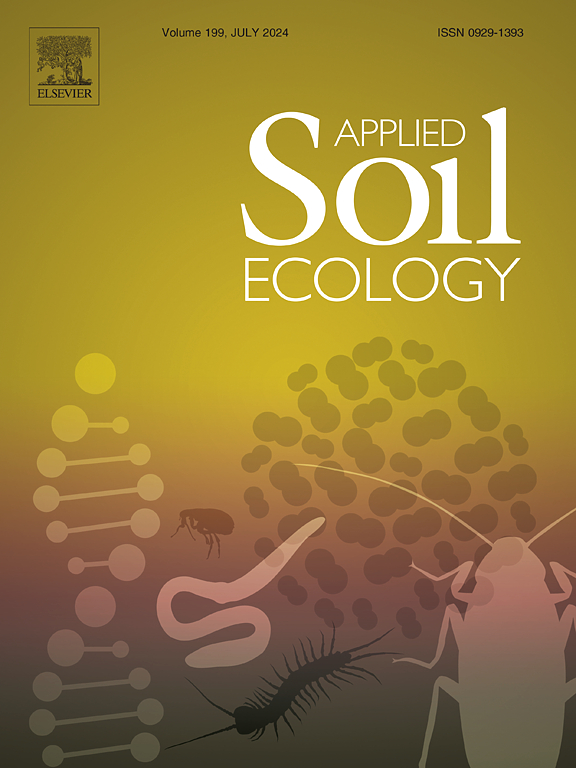Organic matter evolution and microbial activity in a vineyard soil after four years of inter-row cover crop management
IF 4.8
2区 农林科学
Q1 SOIL SCIENCE
引用次数: 0
Abstract
Conservation agriculture approaches are rarely applied to viticulture in central Italy due to some research gaps persisting in this sector that somehow reflect ineffective extension programs and activities. This work analysed the effects on soil health and fertility of two inter-row vineyard management strategies carried out for 4 consecutive years: an annual legume cover crop of Egyptian clover (Trifolium alexandrinum L.) and a permanent meadow with spontaneous species. The inter-rows of the two tested strategies were compared with an adjacent uncultivated soil that had been left untilled for 20 years (control soil). The short-term (4 years) impacts of these techniques on the different soil organic carbon forms and on the soil microbial activity were measured at two soil depths (0–20 cm and 20–40 cm). Soil analyses included total and extractable organic carbon, humic and fulvic acids, microbial biomass carbon, respiration and some enzyme tests. The final aim was to evaluate if four years of soil cover could enhance the stabilisation of the soil organic carbon stock and increase the growth and activity of soil microbial biomass.
The permanent meadow showed a topsoil organic carbon content significantly higher than the annual legume cover, and both management soils showed an organic carbon content higher than the control soil. The topsoil humic acid content of the annual legume cover was significantly higher than both the permanent meadow and control, indicating that legume management stored the soil organic carbon in a more stable form. The microbial biomass carbon and the soil respiration of the annual legume cover topsoil were significantly higher than those of the permanent meadow. Regarding the enzyme activities, β-glucosidase and the enzymes related to the nitrogen cycle were significantly higher in the two managements than in the control, while phosphatase activity was not influenced by the two managements.
The results indicate that soil cover in the inter-row of vineyard increases the stable form of soil organic carbon, with variations according to the type of cover adopted. Even the effects on soil microbial biomass growth and activity were positive, especially for the activities related to the carbon and nitrogen cycles.
求助全文
约1分钟内获得全文
求助全文
来源期刊

Applied Soil Ecology
农林科学-土壤科学
CiteScore
9.70
自引率
4.20%
发文量
363
审稿时长
5.3 months
期刊介绍:
Applied Soil Ecology addresses the role of soil organisms and their interactions in relation to: sustainability and productivity, nutrient cycling and other soil processes, the maintenance of soil functions, the impact of human activities on soil ecosystems and bio(techno)logical control of soil-inhabiting pests, diseases and weeds.
 求助内容:
求助内容: 应助结果提醒方式:
应助结果提醒方式:


